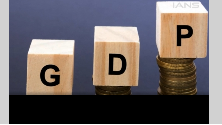Indian markets faced a brutal bear attack on Thursday, November 28th, with the Sensex plummeting over 1000 points and the Nifty sliding more than 1%. This sharp decline paints a grim picture for investors, as a confluence of factors, both domestic and international, conspired to trigger a widespread sell-off.
Leading the downward charge were IT and auto stocks, with their respective sectoral indices taking a significant hit. Tech giants like Infosys, TCS, Tech Mahindra, and HCL Tech witnessed substantial declines, while auto majors Mahindra & Mahindra and Eicher Motors also found themselves among the top losers.
This market downturn can be attributed to several key factors. Firstly, overnight US inflation data signaled a potentially slower-than-expected trajectory for rate cuts, raising concerns about reduced client spending, a major blow to Indian IT companies heavily reliant on the US market. Secondly, global rate concerns and a strengthening US dollar have dampened investor sentiment towards emerging markets, including India. Thirdly, technical resistance levels for the Nifty further contributed to the bearish trend.
Adding to this already volatile mix are concerns over escalating trade tensions and the cautious stance adopted by institutional investors. Foreign Institutional Investors (FIIs), while easing their relentless selling, remain hesitant to become aggressive buyers due to the prevailing global uncertainties.
Despite the gloom, there's a silver lining. The ongoing correction has brought valuations down to more reasonable levels. The Nifty’s price-to-earnings ratio has moderated from its October peak, suggesting a potential buying opportunity for long-term investors.
This market downturn serves as a stark reminder of the interconnectedness of global economies and the impact of international events on domestic markets. While the current scenario appears challenging, it also presents potential opportunities for discerning investors. As always, careful analysis and a long-term perspective are crucial for navigating these turbulent times. The coming days will be critical in determining the market's future trajectory as investors closely monitor global cues and domestic policy developments. It's a time for caution, but also a time to potentially capitalize on emerging opportunities as the market readjusts and seeks a new equilibrium.











































